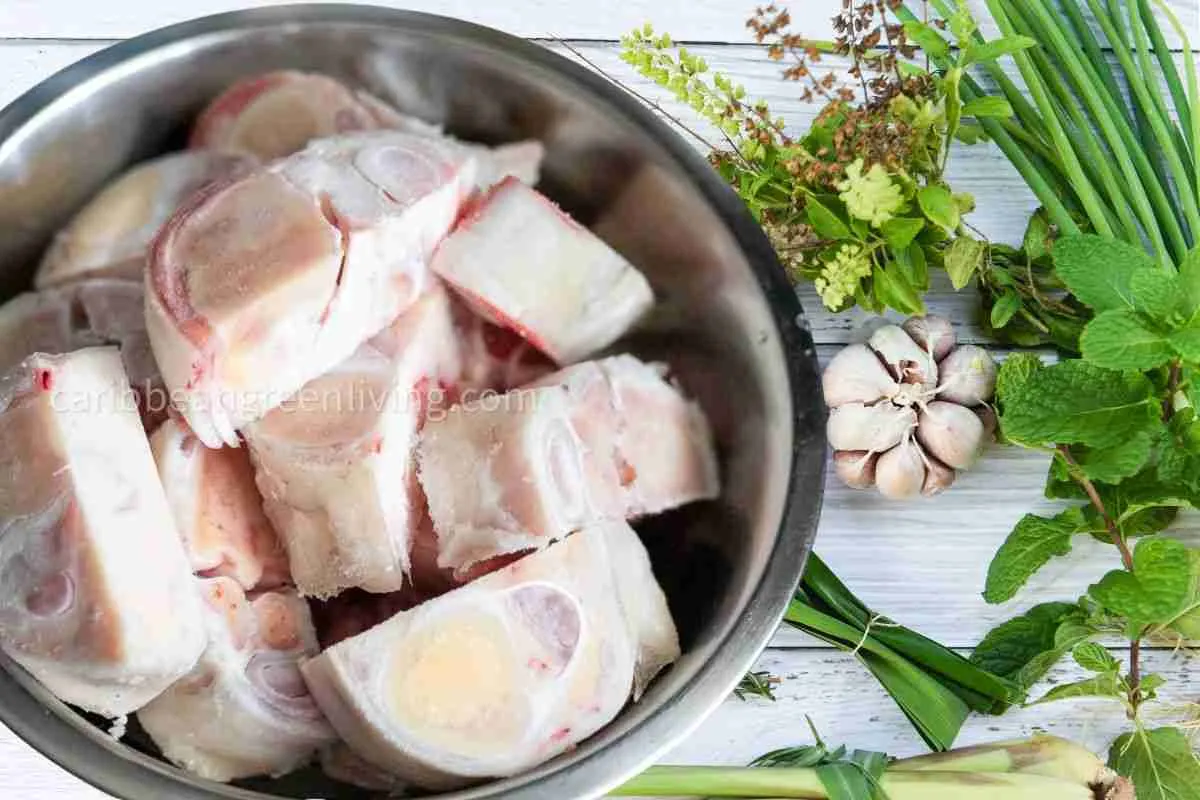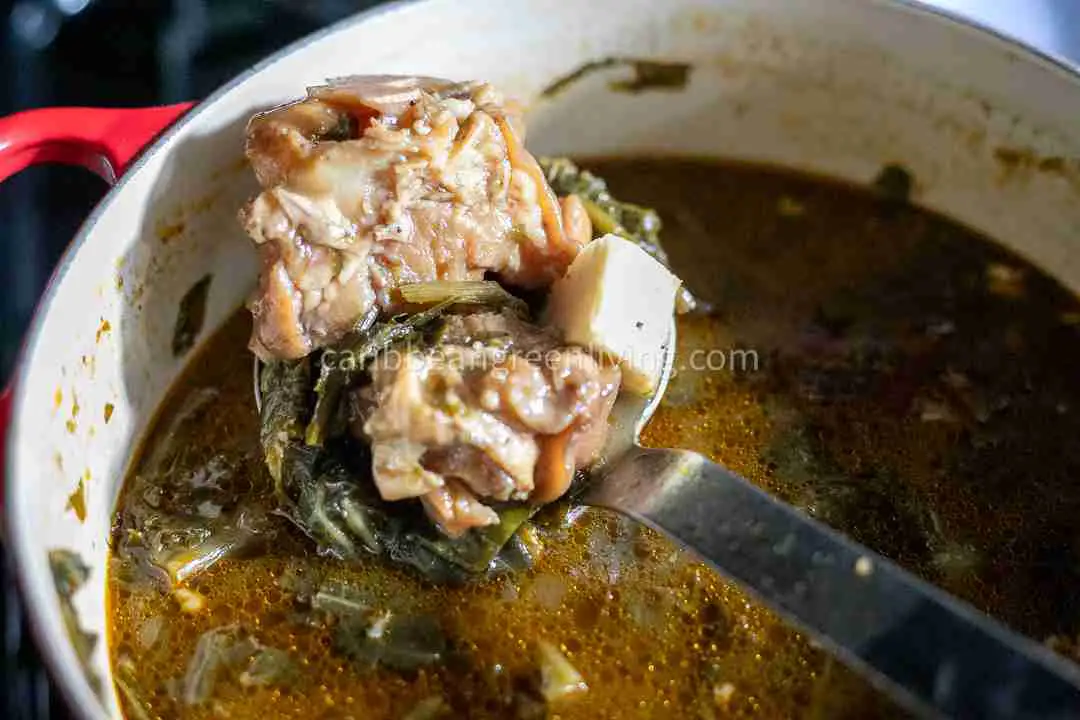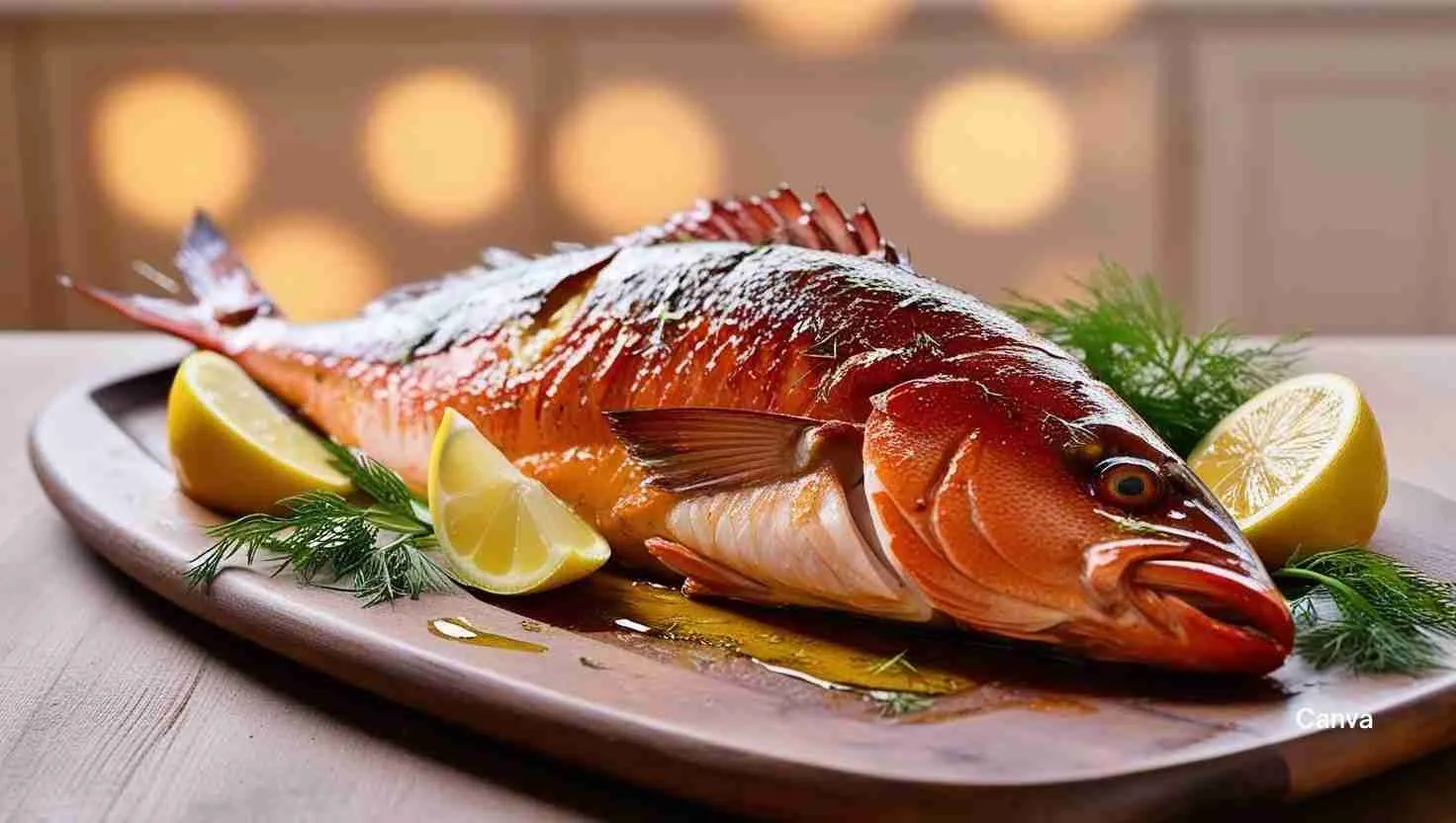The Ultimate Guide to Cooking with Beef Feet (Cow’s Feet): Tips, Benefits, and Recipes
If you’ve never cooked beef feet (a.k.a. cow’s feet) before, let me tell you — you’re missing out on one of the richest, most nourishing ingredients in the Caribbean kitchen.
They’re humble, they’re cheap, and they turn into a velvety, collagen-rich broth that can make even a simple bowl of soup taste like it’s been simmering in a Haitian grandmother’s kitchen all day. In Haiti, we call this magic Bouillon de Pied de Boeuf — and yes, I’ve got a full recipe for you to try.
But first, let’s dig into what beef feet actually are, why they’re worth cooking, and how you can get them tender and delicious without spending half your day at the stove.
What Are Beef Feet?
Beef feet are exactly what they sound like — the lower leg of the cow, usually cut into thick, cross-section pieces by your butcher. They’re loaded with connective tissue, bone, and marrow. That’s the good stuff.
When you simmer them slowly, that connective tissue breaks down into gelatin, giving your soup or stew a silky texture and deep, meaty flavor.
They’re popular not just in Haiti, but also in Jamaica, Nigeria, Mexico, and the Philippines — each culture putting its own spin on the seasoning and cooking method.

Nutritional Benefits of Beef Feet
Beef feet aren’t just tasty — they’re a natural multivitamin for your joints, skin, and gut. Here’s why:
- Collagen & Gelatin → supports joint health, skin elasticity, and digestion.
- Minerals → rich in calcium, magnesium, phosphorus, and potassium.
- Protein → helps with muscle repair and energy.
If you’ve ever sipped bone broth for its health benefits, beef feet take it to the next level.
Where to Buy Beef Feet
- Caribbean, African, or Latin grocery stores usually have them fresh or frozen.
- Butcher shops can cut them to your preferred thickness (½ to 1-inch slices).
- Online meat retailers sometimes carry them, though shipping can get pricey.
Pro Tip: Look for pieces with a light pink color, no strong odor, and minimal hair (your butcher should have already cleaned them well).
How to Clean and Prepare Beef Feet
Proper cleaning is essential — nobody wants a gamey taste in their soup.
- Rinse under cold running water to remove any debris or leftover hair.
- Soak in lemon or vinegar water for 10–15 minutes to help tenderize and remove odor.
- Rinse again before cooking.
- Ask your butcher to cut them for you — trust me, you don’t want to tackle this with a home knife.
Pro Tip: For ultra-clean beef feet, experienced cooks often pass the bones over an open flame to singe off any remaining hair. Use a sturdy pair of tongs to hold and slowly rotate each piece above the flame, then rinse thoroughly before cooking.
How to Cook Beef Feet
You’ve got three primary methods:
1. Pressure Cooking (Fast & Efficient)
- Cooks beef feet in about 30–40 minutes.
- Best for weeknight soups and stews.
2. Slow Cooking (Flavor Booster)
- Takes 4–6 hours on low.
- Produces an ultra-rich, deeply flavored broth.
3. Stovetop Simmering (The Old-School Way)
- 2–3 hours on low heat.
- It requires more attention, but it is very traditional.
Flavor Tip: Always cook with aromatics — garlic, onion, thyme, parsley, hot pepper, or Haitian epis — to infuse flavor right from the start.
Seasoning Ideas & Flavor Profiles
- Caribbean: Haitian epis, parsley, thyme, hot pepper.
- African: ginger, chili, curry powder.
- Latin American: oregano, cilantro, cumin.
- Asian: soy sauce, star anise, ginger.
The flavor possibilities are endless — keep in mind that beef feet can handle bold seasoning.

Popular Dishes Made with Beef Feet
If you’re ready to put your beef feet to work, here are some delicious ideas:
- Haitian Bouillon de Pied de Boeuf — my personal favorite.
- Jamaican Cow Foot Stew with butter beans.
- Mexican Caldo de Pata (cow’s foot soup with hominy).
- Nigerian Cow Leg Pepper Soup.
- Filipino Kare-Kare (oxtail & cow’s foot in peanut sauce).
Storage & Freezing Tips
- Cooked beef feet last up to 3 days in the fridge.
- Freeze in broth for up to 3 months.
- Gelatin-rich broth thickens when chilled — that’s normal and a sign you’ve done it right.
Final Thoughts
Beef feet are one of those ingredients that prove you don’t need expensive cuts of meat to make something deeply nourishing and full of flavor. Whether you go the traditional Haitian route or try a fusion twist, once you’ve cooked with beef feet, you’ll understand why so many cultures swear by them.
If you’re ready to dive in, start with my Bouillon de Pied de Boeuf recipe — it’s hearty, healthy, and a true taste of Haitian home cooking.






